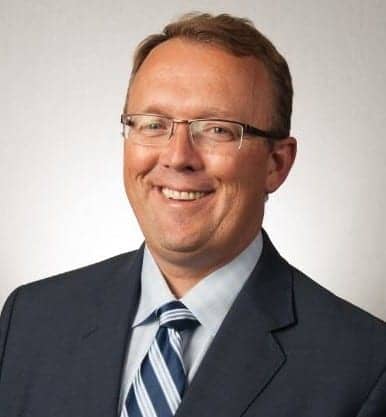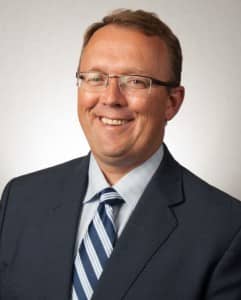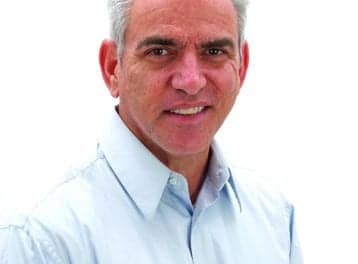Blog Page | May 2015 Hearing Review
The following is an abridged version of Dr Taylor’s article at Holly Hosford-Dunn’s March 17, 2015 Hearing Economics blog at HearingHealthMatters.org. — David Kirkwood, HHTM editor
A recent McKinsey report¹ builds a strong case for the growing demand of medical devices that are “good enough.” In essence, these are devices that are lower priced and don’t possess many of the value-added features that are often found in the premium category. According to the report, this new segment of the market — one that values no-frills solutions—is growing twice as fast as the industry as a whole in many medical device categories.
The report states:
“As decision makers become more cost conscious and competition intensifies, opportunities to serve value-oriented customers in medical devices are growing fast…the key to success does not always lie in changing the product itself, but could involve altering sales models and service offerings.”¹
Although this report doesn’t directly mention hearing aids, it is not too big of a leap to draw parallels to the commoditization of technology occurring within our own profession.
Outcomes Data for Hearing Aid and PSAP Technologies
As a recent peer-reviewed article by Robyn Cox and colleagues attests,² higher-cost premium hearing aids do not provide superior outcomes when compared to lower-cost basic level technology. In a carefully designed study involving 25 participants, the researchers compared laboratory speech understanding tests, standardized self-reports, and open-ended diary entries for 4 pairs of hearing aids: 2 basic and 2 premium level.
Results of the month-long field trials showed no statistically or clinically significant differences between the premium and basic level hearing aids on any measures of outcome for either new or experienced hearing aid users. The results of this study suggest that hearing aids—regardless of technology level or price point—provide patients with favorable laboratory and real-world outcomes. It should be noted, however, that all hearing aids evaluated in this study were painstakingly fitted using best-practice protocols, which likely contributed to the across-the-board positive outcomes.
Similarly, in an unpublished research study that compared basic and premium devices to two different high-quality PSAPs, the researchers found that both types of conventional hearing aids were rated higher than PSAPs for listening to conversations in quiet. Conversely, for two other listening conditions, listening to everyday noises and music, the PSAPs performed as well as the conventional hearing aids. Like the previously mentioned study, all the devices were meticulously fitted using standard protocols.
Emerging Trends in the Data
Obviously, more research examining the benefit of various levels of amplification technology is needed, but some trends are beginning to emerge:
Best practices. Following a best-practice protocol trumps the level of technology being dispensed. In other words, hearing aids with basic technology fitted by a professional using a standardized approach are likely to outperform premium products taken straight out of the box and placed onto a patient’s ears using a minimalist protocol.
Value of high-cost features. Feature creep adds complexity, cost, and time, but not necessarily value. Every 12-18 months, hearing aid manufacturers launch a new product with updated features. For about 2 decades, this has been an effective strategy because the marketplace (audiologists and hearing instrument specialists) is on a quest to provide patients with the latest innovations to address their needs. According to the peer-reviewed study cited above,2 these incremental improvements in feature performance don’t equate to incremental improvements in patient outcomes. Cost controls by third-party payers and large purchasing organizations, as well as the use of evidence-based decision making by clinicians, may be the only ways to stymie feature creep.
Alternatives? High-quality PSAPs, as Dr Frank Lin suggested at his 2014 ADA keynote,³ that meet a strict performance criteria may be “good enough” for some patients. It’s up to hearing care professionals to ensure those criteria are well-defined and verified for every individual. (Note: The FDA still defines a PSAP as not being applicable for hearing impairment.)
If It’s Good Enough for Consumers, Is It Good Enough for Audiologists?
The commoditization of amplification technology does not necessarily mean the sky is falling for the profession. After all, professional expertise and judgment are needed to verify that any amplification device—regardless of sophistication and price—has a smooth, undistorted frequency response, along with other acoustic characteristics of a well-fitted hearing aid. Expertise, judgment, and patience are also necessary in the long process of helping people overcome the myriad behavioral and societal consequences of gradual, adventitious hearing loss in adults.
Rather than the sky falling, the rise of the “just good enough” market is an opportunity for audiologists, hearing instrument specialists, and others associated with our professions to broaden the scale and scope of patient offerings: the ability to provide truly patient-centric care that revolves around the behaviors and attitudes of the individual, rather than a single device. Lower prices for medical devices need not mean less advanced technology or inferior service. They could reflect using more simple-to-use gadgets, specialized for specific purposes—a device for the phone, one for TV and home audio, and ear-worn devices for conversations outside the home—and all simple-to-use, high-quality, and customized to the patient by their dispensing professional, who serves as the hub.
A New Delivery Model, A Larger Market

Figure 1. Hearing loss segmented by degree. Data from Nash,4 Lin et al,5,6 and Wallhagen & Pettengill.7
With a new delivery model, we may reach the vast majority of individuals with milder losses who rarely consult us for services. Historically, our industry has served the top 25% of patients in Figure 1. These are individuals, older in age, often with more complex problems, requiring more time and expertise to manage.
On the other hand, those in the bottom 75% of the pyramid are likely to have less complicated hearing loss that doesn’t require numerous appointments for adjustments and counseling. “Just good enough” will probably appeal to this large group of patients. But our current system, predicated on numerous office visits and incremental improvements in hearing aid features, isn’t valued by the vast majority of patients in the bottom 75% of Figure 1.
It’s Hard, But We Have to Change
The demand for “just good enough” will require us to change. And, we all know change is never easy. After all, the majority of hearing care professionals still do not routinely use speech-in-noise tests or validate outcomes—even in the face of overwhelming evidence supporting their use.
If audiologists and hearing instrument specialists want to thrive in the “just good enough” era, the majority of them will have to change. Collectively, we need to engage in “change talk,” which, ironically, comes directly from the process that clinicians who practice motivational interviewing use to elicit behavior change in their own patients. There are three important aspects of change talk, and each of them will help us navigate the uncertainty of the present era:
- Do we recognize the need to change and how important is it for hearing care professionals to evolve in order to meet the changing needs of the marketplace?
- Confidence. Do we have the necessary skills to meet the demands of consumers, and how confident are we in mastering these new skills?
- Commitment. How committed are we to changing? Who is going to lead this unified commitment to change?
Even though technology is fast becoming a commodity, the uniquely human skills of providing guidance and support based on sound scientific principles and good audiology cannot be commoditized by machines—yet. It all starts with our desire to change in order to meet the needs of the marketplace in the “just good enough” era.
References
-
Llewellyn C, Podpolny D, Zerbi C. Capturing the new “value” segment in medical devices. January 2015. Available at: http://www.mckinsey.com/insights/health_systems_and_services/capturing_the_new_value_segment_in_medical_devices
-
Cox RM, Johnson JA, Xu J. Impact of advanced hearing aid technology on speech understanding for older listeners with mild to moderate, adult-onset, sensorineural hearing loss. Gerontology. 2014;60(6):557-68. doi: 10.1159/000362547.
-
Dr Frank Lin Details Consequences of Age-related Hearing Loss and Future Avenues at ADA Convention Keynote. Hearing Review. 2014;21(12)[Dec]:30-31. Available at: https://hearingreview.com/2014/11/dr-frank-lin-details-consequences-age-related-hearing-loss-future-avenues-ada-convention-keynote
-
Nash SD et al Unmet hearing health care needs: The Beaver Dam Offspring study. Am J Public Health. 2013;103(6):1134-1139.
-
Lin FR, Thorpe R, Gordon-Salant S, Ferrucci L. Hearing loss prevalence and risk factors among older adults in the United States. J Gerontol A Biol Sci Med Sci. 2011 May;66(5):582-90. doi: 10.1093/gerona/glr002
-
Lin F, Niparko JK, Ferrucci L. Hearing loss prevalence in the United States. Arch Intern Med. 2011 Nov 14; 171(20): 1851–1852.doi:10.1001/archinternmed.2011.506
-
Wallhagen MI, Pettengill E. Hearing impairment: Significant but underassessed in primary care settings. J Gerontol Nurs. 2008;34:36-42.
Brian Taylor, AuD, is an audiologist who has worked for many years in the hearing aid industry and now is senior director of clinical affairs for Turtle Beach/Hypersound in Poway, Calif.
Chime in at: http://hearinghealthmatters.org/hearingeconomics
Original Citation for this article: Taylor, B. The “Good Enough” Era and Hearing Healthcare. Hearing Review. 2015;22(5):10.






